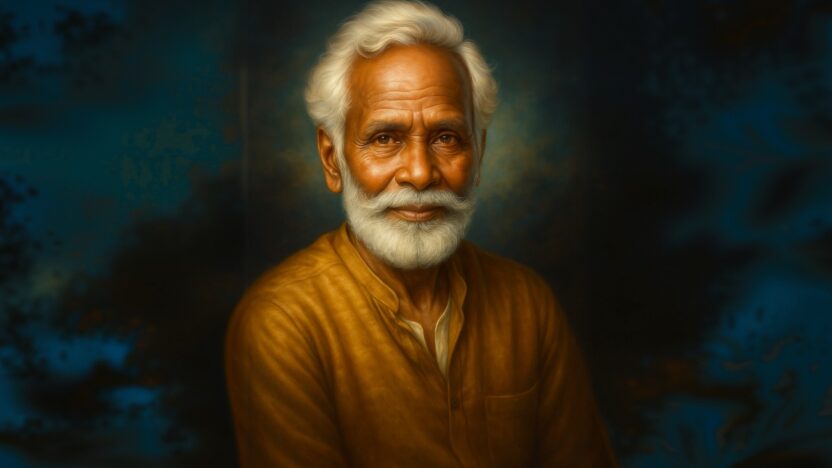Introduction
Among the greatest minds of India’s spiritual and philosophical heritage stands Nagarjuna (Nagaarjun Ranabhai). Revered as one of the most influential Buddhist philosophers, Nagarjuna lived around the 2nd century CE and is often hailed as the “Second Buddha” for his revolutionary contributions to Mahayana Buddhism. His profound insights into emptiness (śūnyatā), compassion, and the Middle Way continue to shape Buddhist traditions and modern philosophical thought.
Early Life and Prophecy
Nagarjuna was born into a Brahmin family in South India, most likely in present-day Maharashtra or Andhra Pradesh. According to legend, his life was marked early by a prophecy that he would live only a short span. To safeguard his future, he was sent to the prestigious Nalanda Monastic University, where he ordained as a monk and dedicated himself to study, meditation, and debate.
At Nalanda, his brilliance quickly shone through, and he eventually rose to become the head of the monastery, respected by monks and scholars alike.
Founder of the Madhyamaka School
Nagarjuna’s most significant contribution was the establishment of the Madhyamaka (Middle Way) School of Mahayana Buddhism. His philosophy centered on śūnyatā (emptiness)—the idea that all phenomena lack inherent existence and exist only in relation to other factors.
This Middle Way avoided the extremes of believing in eternal essence or complete non-existence. His teachings offered a profound balance, guiding practitioners to wisdom, compassion, and liberation.
His masterpiece, the Mūlamadhyamakakārikā (Root Verses on the Middle Way), remains a cornerstone of Buddhist philosophy, still studied globally by monks, scholars, and philosophers.
Philosopher, Teacher, and Social Reformer
Nagarjuna was not only a philosopher but also a practical guide and reformer. He:
- Engaged in debates with scholars of other traditions, often converting them to Buddhism.
- Helped establish temples and stupas, spreading Buddhist teachings.
- Served as an advisor to kings, using wisdom to promote justice and welfare.
- Emphasized compassion and service, ensuring philosophy served society.
His life showed that spiritual inquiry is not separate from social responsibility.
Legends Surrounding Nagarjuna
Many legends and myths grew around Nagarjuna’s life, reflecting the reverence people had for him.
- He was believed to possess alchemical knowledge and esoteric sciences.
- Stories tell of him receiving secret teachings from the Nāga realm (serpent beings), enriching his wisdom.
- His extraordinary influence earned him the title “Second Buddha.”
While these stories may be symbolic, they highlight his mystical aura and the transformative power of his teachings.
Lasting Global Influence
Nagarjuna’s philosophy did not remain confined to India. His works traveled widely, shaping Buddhist traditions across Tibet, China, Japan, Korea, and Mongolia.
- In Tibet, his Madhyamaka philosophy became central to Buddhist scholasticism.
- In China, his teachings shaped the Sanlun (Three Treatises) school.
- Across Asia, his works inspired countless scholars and monks, bridging philosophy with meditation practice.
Even today, universities worldwide study Nagarjuna’s writings, not only as religious texts but also as works of logical, ethical, and metaphysical brilliance.
Legacy of Nagarjuna
Nagarjuna’s legacy lies not in wealth or power but in wisdom, compassion, and intellectual clarity. His philosophy of emptiness challenges rigid thinking, inviting us to see life as interconnected, impermanent, and full of possibility.
His title as the Second Buddha reflects his unparalleled role in deepening and spreading the Dharma. To this day, he remains a guiding light for seekers who wish to balance knowledge with humility, reason with compassion, and philosophy with practice.
The story of Nagarjuna (Nagaarjun Ranabhai) is both historical and timeless. From a boy marked by prophecy to a philosopher who reshaped Buddhism, his journey reveals the power of dedication to truth and service. His teachings on the Middle Way continue to inspire millions, reminding us that liberation lies not at the extremes but in the profound balance of wisdom and compassion.
Nagarjuna’s life invites us all into a deeper reflection: to question, to seek, and to live with awareness.
